App Development Cost: How to Estimate Your Mobile App Project
How much will it cost to develop your app? Answering this question is the first thing a development team should do before starting work on your project. An estimate will clearly show you if a development company is right for you and if you’re the right client for them
Introduction
Not only is estimation our first stage at Mobindustry when a new client comes to us with a project – it’s also essential. App development cost depends on lots of factors, so it can be hard to tell immediately how much a particular app will cost.
This article is based on our own experience and is written for clients who want to hear about the estimation process from our company’s perspective. It will help you better understand our internal procedures even before we start working on your app.
You’ll find out how we estimate mobile projects, what you need to provide so we can make an estimate, and how much time it takes us to calculate the cost of building a mobile application.
Cost of app development worldwide
So, how much does it cost to make an app? The cost of app development varies drastically across the globe and depends on the cost of living in a particular region. While in the US a developer can charge $100 and more per hour, in Eastern Europe the price of development usually sits between $25 and $35 per hour.
That said, the skills of developers in Eastern Europe are pretty much the same as those in the US, as the technologies and documentation are universal and depend only on the companies that make them, like Google and Apple – the two most influential companies in the mobile development world.

The cost of creating an app depends on multiple factors, and we’ll discuss them later. To give you an idea of how much an app may cost, here are the results of several surveys by GoodFirms and Clutch.
According to GoodFirms, the cost of making an app starts at $24,000 for apps with less functionality and can reach $137,000 for feature-rich apps.
The price of an app depends highly on the hourly rate of the development company. With a rate of $50 per hour, a basic app will cost $25,000. However, in Eastern Europe, you can find great development companies that make apps at a $40 or $35 per hour rate.
So, to answer a question “How much does app development cost?”, you need to consider the location and skills of the developers.
What influences the cost of an app
The hourly rates and locations of developers aren’t the only things that influence a cost to build an app. Let’s talk about other factors that can be influential when it comes to your development budget. Some of them will depend on your business idea, others on your team’s professional skills.
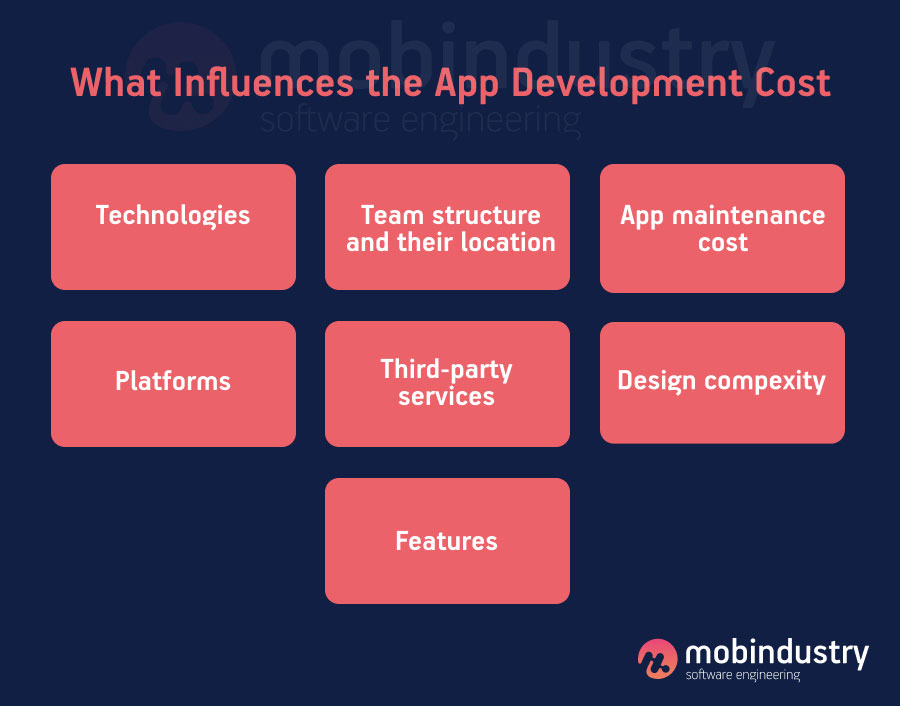
Features
The number of features in your app and their complexity influences the price the most, as this will dictate the number of hours developers spend on each part of your app. A larger app requires more time for planning, business analysis, and design.
We often advise our clients to start with a minimum viable product (MVP) if their project is large. This helps you enter the market faster and make changes to the project according to the market’s reaction instead of building a large product for over six months to later discover it’s not something your target audience wants.
Starting with an MVP allows you to enter the market faster and make changes to the project according to feedback, instead of building a large project that a target audience doesn’t need
If your product needs complex features to work properly, be ready to spend over 500 hours on development. Here are some examples of complex technologies that result in budget-demanding features:
- Augmented reality
- Machine learning
- Artificial intelligence
- Blockchain
- Internet of Things
The type of app plays a huge role in a number of features. For example, a delivery or retail app will almost always cost more than a simple calendar application or a fitness app.
Technologies
There are lots of ways to develop a project. Some are more suitable than others, but at the end of the day, you and your development team need to make a choice. When it comes to mobile development, there are three general paths you can take:
- Cross-platform development
- Native development
- Hybrid development
Each of these approaches has its advantages and disadvantages. At Mobindustry, we usually offer either native or cross-platform development, as they best achieve our clients’ goals.
Cross-platform development is great for small to medium-sized projects, while native development is more suitable for large enterprise applications.
On the one hand, cross-platform development is less expensive, as you get one app that works for both iOS and Android with minimal tweaking. However, native apps are more solid, which is crucial for large products. With cross-platform development, you can save around 35% to 40% of the project cost compared to native development for two platforms.
Platforms
The number of platforms you want your app to be available on also influences the development cost, especially with native development, since iOS and Android apps are completely different products made by independent developers or teams.
Even if you’re developing a cross-platform app for Android and iOS, you’ll still need to do a bit of tweaking for each platform despite the shared code base.
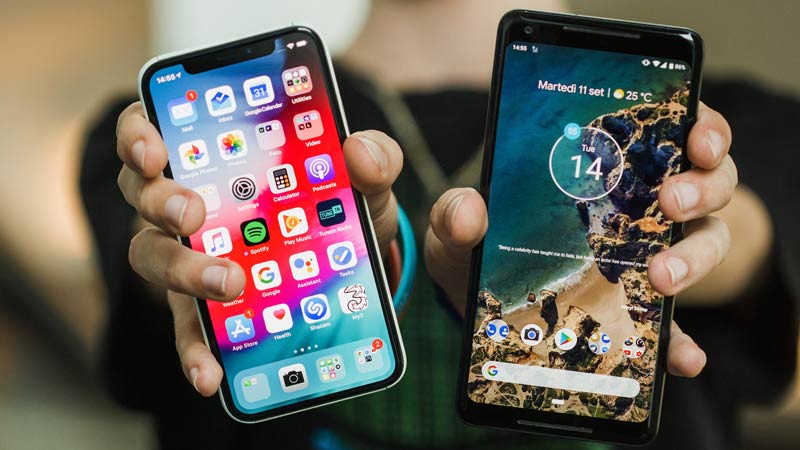
You can also choose to develop a web version of an app (for example, for Mac computers). All this will influence the price, and in the case of native development will increase it significantly.
Design
Usually, design takes up 20% of the time for the whole project, but it can easily exceed this if you want an advanced design for your application. Currently, the mobile app market is saturated, so having an outstanding design is something more of a standard than a selling point.
Animations and beautiful transitions between screens will make your design more complex and therefore pricier. Expect to invest in your design, especially if you create a B2C application for a large audience.
Backend architecture
The backend structure is the backbone of your digital product, and it requires time to design it, as the back end is responsible for everything that happens in the app, from storing and managing data to implementing the business logic.
The complexity of your app and the number of expected users will influence the time a developer needs to set up the backend architecture and servers. It will also dictate your app’s maintenance requirements: by choosing the right architecture at the initial stage of product development, it will be easier and faster to maintain your product in the future.
App maintenance
App maintenance is another factor that influences post-release software development costs, and you should expect to have these expenses for as long as your app exists. So what does app maintenance include?
Operating system updates
New versions of operating systems come out each year. For example, in September 2020, we’re expecting iOS 14. With last year’s update, our developers at Mobindustry needed to do lots of adjustments to our clients’ apps, as iOS 13 had some fundamental changes.
Library, framework, and tool updates
Just like operating systems, libraries, frameworks and third-party services also get updated. Developers can be hesitant to update libraries because a new version can mess with the existing code. However, it’s necessary to apply these updates, as they often fix security and performance issues.
Bug fixing
There are no absolutely perfect apps: even large products from Google and Facebook have their issues. Solving them is one of the most important maintenance activities. Finding bugs is just one of the things a QA specialist does when helping to maintain an app. Other activities include checking performance and managing security.
Third-party services
Lots of third-party services are paid, so you should consider these expenses when calculating the budget for your mobile product. Services like payment gateways, maps, and push notification services can charge you fees depending on the number of users.
Mobile app maintenance is something you’ll need to do constantly, so make sure you consider these costs beforehand, especially when calculating the revenue you’ll start getting from your app. The annual cost of mobile app maintenance can range from 20% to 50% of the initial project cost.
Structure and location of your development team
Your team’s structure and location will also dictate the cost of development. The influence of location is rather straightforward: the hourly rates of your developers will depend on the cost of living.
How much does it cost to hire an app developer? The location is the main factor: Africa and India are two of the cheapest markets in the world, while developers from the US, UK, Singapore and Western Europe can charge 5 to 10 times more. Top companies charge up to $250 per hour.
Africa and India are two cheapest markets with varying quality, and developers from Western Europe and the US charge 5 to 10 times more. Eastern Europe is a great balance between cost and quality
Eastern Europe has a perfect price to quality ratio and has a great pool of engineering talent.
If you already have an in-house development team but need to quickly expand it, you can use outstaffing services and integrate a remote professional into your existing team to work on your project. This is a great way to quickly find someone with the expertise you need without spending time and money on recruitment.
Outsourcing, outstaffing, or in-house development?
Generally speaking, you have three options when it comes to mobile development:
- Outsource your project to another company completely
- Create your own in-house team
- Hire one or several professionals from another company and integrate them into your team
Each of these approaches comes with pros and cons. Let’s analyze them.
Outsourcing is a great way to get your project going fast. You just need to find a company that has the expertise you need and is great at communicating.
Outsourcing also helps businesses save money, as there are hundreds of companies with different rates. The downside, however, is a lack of immediate control, as the team you’ll be working with may be situated in another city or even country. Good outsourcing companies send daily reports so everyone’s on the same page.
Having an in-house team is great, and having all your developers in your office will make communication easier. However, you’ll need to invest time and money into recruitment, office space, equipment, human resources staff, and so on.
Also, if a team member leaves your company in the middle of the project, you’ll need to quickly hire another one. This may be challenging, especially if there’s great competition for programmers in your region.
Outstaffing is another alternative that will help you get talent from anywhere in the world and add specialists to your existing team. It’s great if you want to keep all other processes like project management and quality assurance within your company.
What exactly will you pay for?
No matter which option you choose, this is what comprises the price of mobile app development:
1. Business analysis — Includes market analysis, technical specification development, and wireframes
2. UI/UX design — Includes designing the app according to your branding and wireframes
3. Project management — Includes organizing the team’s work, communication, daily standups, reporting, and team management
4. Development — Goes hand in hand with quality assurance and includes code reviews, merges, and bug fixes. There’s also a preparatory stage before development starts when developers establish the servers, architecture, frameworks, libraries, and so on.
5. Quality assurance — Consists of different types of testing like manual and automated and involves checks for performance, security, business logic, connection to the back end, and so on
6. Release — Includes creating accounts on app stores, adapting the app to each store’s rules, and optimizing the app description so the app appears in app store search results
7. Maintenance and updates — Includes fixing bugs, ensuring support for new operating system versions, and updating libraries, third-party tools, and frameworks
8. Third-party service fees — Recurring expenses for cloud hosting and third-party services like payment gateways and maps
How we estimate apps at Mobindustry
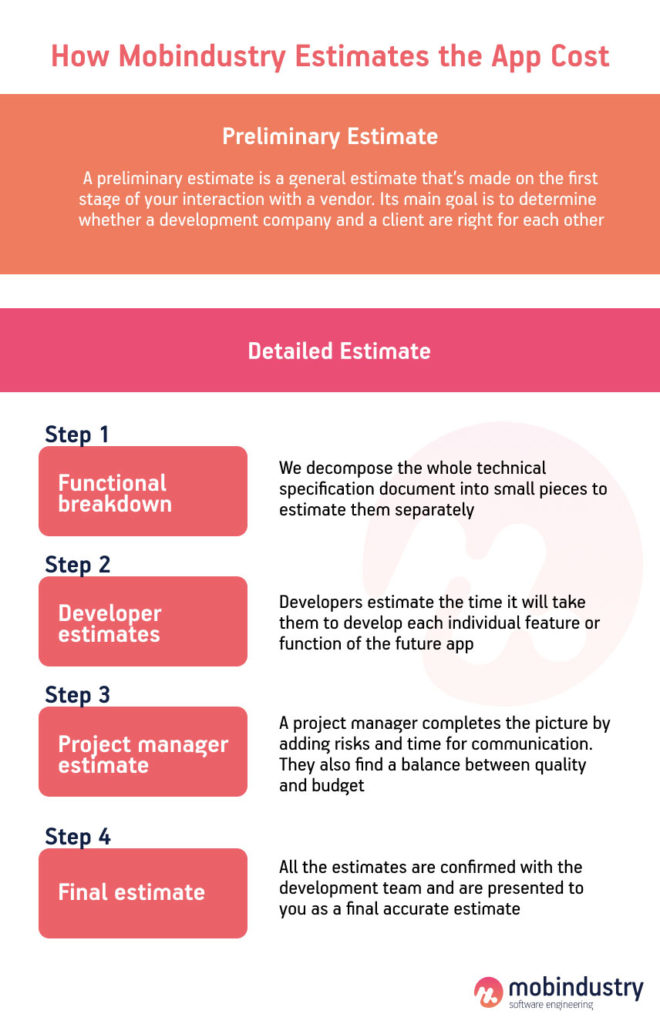
We make two types of estimates for our clients:
- Preliminary (rough) estimates
- Detailed estimates
The goal of a preliminary estimate is to find out whether a client and a development company are right for each other.
A preliminary estimate is a very general estimate that doesn’t take too many details into account. It only requires a few hours on our part. Be aware that this estimate is very approximate, however, and that it will likely be only about 70% accurate. This means you should be ready for the real mobile app development cost to be higher or lower by about 30% of the preliminary estimate.
The goal of a preliminary estimate is to find out whether a client and a development company are right for each other.
After our client confirms that they’re comfortable with the cost of the preliminary estimate, we proceed with a detailed estimate.
We make a detailed estimate wwhen we know all the details about your app. The detailed estimate takes more time and effort on our part because it involves the whole development team making an app development cost breakdown. Usually, a detailed mobile app development cost estimate takes no fewer than two days.
Here’s how how to estimate app development cost in four steps:
Step 1. Functional breakdown
We decompose the whole technical specification into small pieces that are easier to estimate. There are two approaches to decomposition:
- By screens
- By functions
Decomposition by screens results in something that looks like wireframes, where you can see all the functions on each screen. For example, the login screen might contain the following functions:
- Login and password validation
- Password recovery
- Sign in
- Login via social media (e.g. Facebook, Google)
The technical specification will contain information about the exact functionality that needs to be implemented.
Step 2. Developer estimates
The next step involves developers. Their task at this point is to estimate how many hours it will take to implement each function. Usually, their estimates come as a range indicating minimum and maximum hours.
Note that developers tend to overestimate hours in case something takes more time than they think. For example, developers might estimate a project that typically takes 300 hours to develop as a 500-hour project.
This is where the project manager steps in.
Step 3. Project manager estimate
The project manager connects you to your development team. It’s their duty to find a compromise between quality and price.
At the final estimation stage, the project manager looks over the developers’ estimates and accounts for other things such as:
- Risks
- Communication (daily team meetings, meetings with you, calls, demonstrations, work summaries)
- Testing
- Design
- Bug fixes
- Internal acceptance
There are also other processes that take time and should be included in the detailed cost estimate for app development. For example, if there are two Android or two iOS developers on a team, they’ll need some time at the end of each day to merge their code.
Apart from that, build creation also takes a rather significant amount of time – up to 10% of total development time.
When creating a detailed estimate, a project manager has to take into account the release process, as well as refactoring if the project is large.
Step 4. Final estimate
All these modifications mentioned above are then confirmed by developers and presented to you. In the end, after we estimate the cost to build your mobile app, you’ll get a document with information including the names of your sales manager, project manager, and other members of the development team.
As you can see, detailed estimation is a hard process that involves all team members. Outsourcing companies know that only 5% of all client requests actually become projects. For this reason, we can’t provide detailed estimates for every project that comes to us. That’s why it’s considered a best practice to make a rough estimate first to find out if a client is ready to work with a particular company.
Pricing models
There are two major IT outsoursing models that we use:
- Firm fixed price
- Time & materials
Firm fixed price involves an extremely detailed set of requirements that can’t be changed.
The time and materials model is more flexible. With this model, you pay directly for the time spent on development. The amount of time spent can vary based on the functionality you request and changes to requirements.
| Factors/Pricing models | Time & Material | Fixed Price |
| Project size | Medium & Large | Small & Medium |
| Requirements | Evolving | Defined |
| Flexibility | High | Low |
| Client participation | Significant | Little |
| Approach | Agile | Waterfall |
Which model is best for you depends on the type of project you’re developing, but at Mobindustry we usually suggest the time and materials model because it allows us to make changes and adjust the app according to your wishes, which may change during development.
Types of Clients
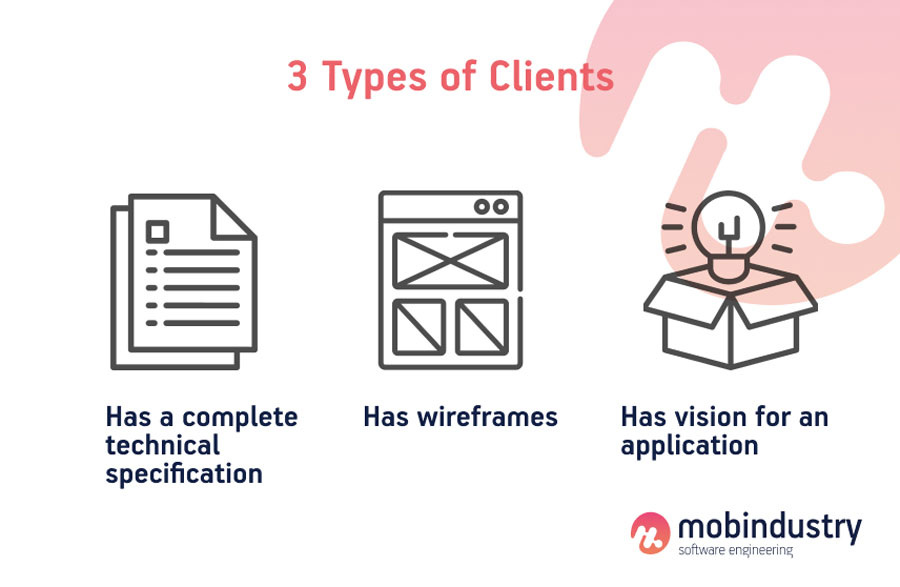
In our experience, there are three types of clients who come to us with projects. The main difference for us as a development team is how detailed each client’s vision is.
When a client comes to us, they may share:
- Complete technical specifications>
- Wireframes
- A vision for an application
The process of working with a client depends on what they come to us with. Let’s discuss these differences in more detail.
Case 1: Complete Technical Specification
This is the best case scenario. If a client has a complete technical specification, it means they have a clear vision of what they want their mobile app to look like and we know exactly how to estimate the cost.
A technical specification is a document with wireframes and algorithms that are clear and specific, not allowing any hidden costs.
It’s great if the technical specification also includes API documentation for integration with the back end.
If you have a technical specification, that’s great! All we have to do is make a detailed estimate.
Case 2: Wireframes
In this case, a client has wireframes or so-called mockups that show the overall principles of the app’s business logic. In other words, wireframes show screens, functions, and their relationships.

This document, however, is different from a technical specification because it contains only general information and lacks details. It may be interpreted in various ways. Let me explain with a simple example.
Imagine a login screen. In wireframes, you’ll see screens that show up after the user performs some action (for example, after they log in).
But what actually happens when a login and password are entered? Login credentials go to the server, which checks whether there’s a user with the given login and password and returns data to the mobile client – your app.
What happens during this confirmation process on the screen? Maybe there’s a loader? Or maybe there isn’t?
And what happens if the password is wrong? Unlike a technical specification, wireframes don’t contain such information and don’t take intermediate conditions into account.
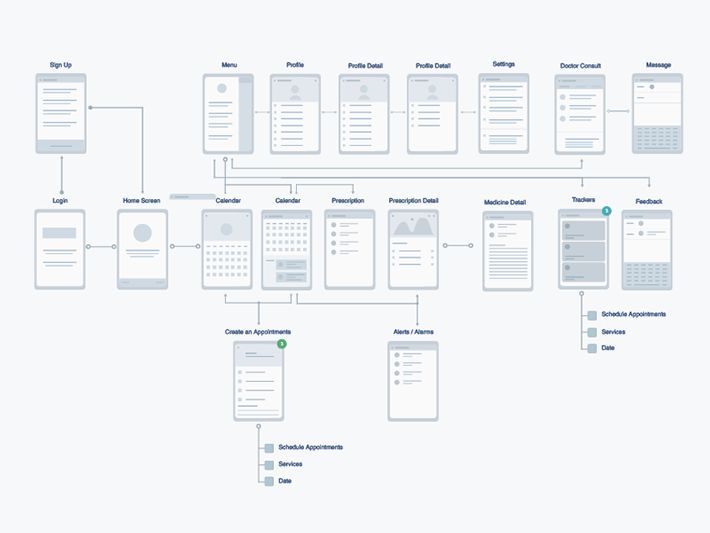
What does this mean for us as developers and for you as a client? The simple answer is differing interpretations.
Intermediate conditions aren’t discussed in detail at the estimation stage, and you need to understand that the less initial data we have (wireframes as opposed to a technical specification, for example), the higher the probability that you’ll get something that’s different from what you expected.
In this case, there are three options: you either have to accept the application as it is, pay for changes during development, or involve the business analysis department to create a detailed technical specification. As you can see, an estimate based only on wireframes is riskier, and there may be unpredictable changes to the budget.
Agile development is a better choice in this case both for you and your development team.
Case 3: Application vision
This case is the riskiest, as the client doesn’t have anything but a vision of what they would like to create. An app vision contains only a concept and few details.
In this case, we offer to involve our business analysis department to determine details and create a technical specification. This is a separate service that also costs money.
When business analysts start working with you, they ask all possible questions about ambiguities in your app’s concept.
When business analysts start working with you, they ask all possible questions to clarify ambiguities in your app’s concept. Of course, most of the details about intermediate states of screens developers can find in guidelines for iOS and Android applications, but there can still be some questions. This is what business analysts are for.
At Mobindustry, we insist that our clients work with our business analysts because they help us manage expectations and deliver clear instructions to our developers. Why is managing expectations so important? Because it helps us avoid misunderstandings and control the development process – and makes sure you know exactly what you’ll get in the end.
We prefer not to work with clients who refuse to create a technical specification. In 90% of cases, these clients are disappointed with the final application. We take our work seriously, and we expect the same attitude from our clients.
However, there is another option: an open budget.
Open Budget
An open budget model is possible only if a client who isn’t an expert in mobile development wants to learn how to express their wishes and demands to developers.
This is Agile development, and it works like this:
- The whole project is divided into delivery phases, and you confirm their frequency.
- We agree on on key functionality without which the app wouldn’t make any sense. Other functionality goes to the backlog.
- After each delivery phase comes time for an iteration. This is when our development team gets feedback from you.
- When the next iteration comes, we look at what’s in the backlog and decide what functions will be added in this iteration and which can be set aside until a future one.
This process continues, and in this way we understand what you want from the development process.
When making a rough estimate for development with an open budget, we provide an average risk multiplier. As we begin development, we suggest coming to a consensus concerning functionality we can implement within your budget.
Final Thoughts
Estimation is the first stage toward a quality application and collaboration between an outsourcing company and a client.
While the purpose of a rough estimate is to find out if a development team and a client are speaking the same language, a detailed estimate guides the whole development process.
It’s great if you already have a technical specification for your project. But if you don’t, we can help you create one by working with our business analysis department.
Note that your budget will also need to account for advertising your app after it’s launched. Think about the cost to promote your app beforehand. Otherwise, you won’t be able to present it to a wide audience and attract users.
Contact us for a rough estimate for your idea: we’ll be able to tell you an average cost to develop an app depending on its type and size.


